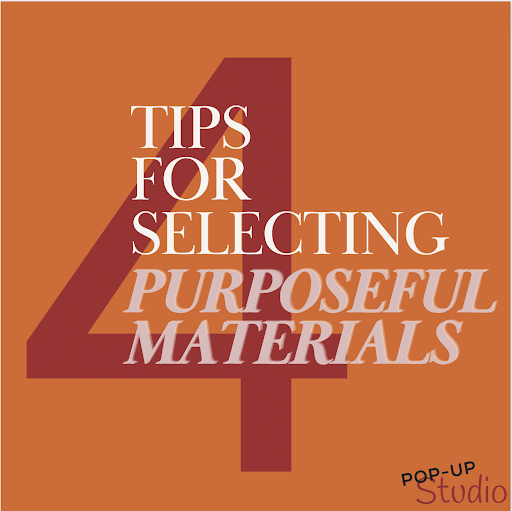Let’s promote children’s artistry across the curriculum by selecting materials that inspire hands-on learning.
I work with a concept-based, competency curriculum in my home province of British Columbia, Canada. Our K-Grade 12 students are guided to acquire mastery in content and skills, develop conceptual understandings of Big Ideas within each subject area, and gain proficiency in disciplinary and transdisciplinary competencies such as inquiry, critical and creative thinking, and even purposeful play. This post shares 4 practices I’ve found helpful in selecting materials to this end, through hands-on learning experiences.
Tip #1 – Look closely at common materials.
Artistry comes from thinking and behaving as an artist. Artists explore mediums and modalities to test limits and to awaken possibilities. Find a few objects in your environment to explore. Take a few minutes to feel the texture of the object, to notice its design. If possible, manipulate the object, see if you can take it apart or test its properties in some way. For more guided or structured slow-looking exercises, check out Project Zero’s thinking routines to support you in visual inquiry (www.pz.harvard.edu/thinking-routines). Slow-looking routines can help discover the materials and their affordances for learning.
Tip #2 – Explore the characteristics of a material and the possibilities afforded by interactions with it.
Let’s invite our instructional design thinking. Consider these questions:
How might working with this material provoke inquiry?
How might this material support the exploration of a concept or concepts?
How might this material help inspire connections to people or places in your context?
What complementary or contrasting materials might kindle empathy and sense-making?
Tip #3 – Get inspired on field trips
Identify a sensory-rich environment. Children’s play spaces, children’s museums, tinker labs, and Maker Spaces offer inspiration and examples of touch-and-feel, sensory experiences. Take a notepad, pen, and a camera to document the spaces that pull you in and ignite your creativity! Notice the materials in the space, but also the storage, display, and flow.
Consider how you might bring aspects of these experiences into your context!
Tip #4 – Ask your students!
Ask them which materials they would like to try out, or which might help them explore an idea or help them to address a learning need.
In collaboration with your students, you may want to consider student interests, curricular objectives and standards, social dynamics, and conceptual misunderstandings.
Whether you pop up a table or small area, or engage the class in an ongoing exploration of materials, you are awakening the aesthetic dimension with your learners!
Want to know more about facilitating sensory-rich experiences with your learners?
The Deep Learning Made Playful with Everyday Materials workshop invites you to experience the power of purposeful play. We’ll explore playful and purposeful learning with 3-5 materials from your environment. This workshop is designed for 60-90 min but can be expanded into a full-day PD event or workshop series. Click below to explore the WORKSHOPS page for more details and to get in touch with Misty.
